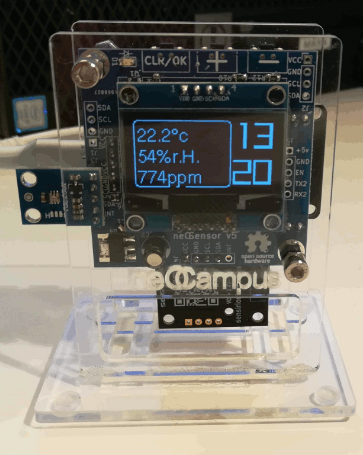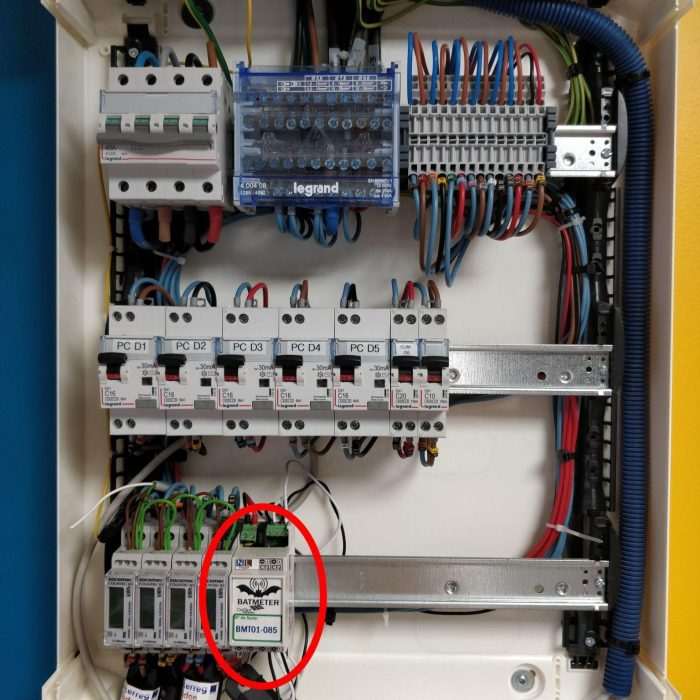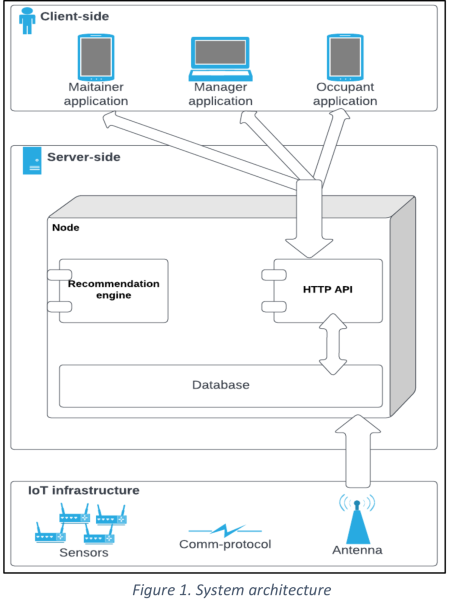How can the Internet of Things be used in buildings: use-cases in Toulouse, Madrid and La Rochelle
The Internet of Things (IoT) plays a crucial role in a University Living Lab which is a real-world environment for testing and experimenting with new technologies, services, and user experiences. In Universities, labs often focus on research and education, providing students and faculty with a space to study and explore the practical applications of IoT. Connected devices and systems can be used to monitor and control various aspects of the living lab environment, such as temperature, lighting, air quality, energy consumption, and more. The data generated by these devices can be analyzed to better understand the behavior of users, identify areas for improvement, and inform future design decisions. Additionally, the deployment of IoT technologies in a university living lab provides opportunities for hands-on learning and experimentation, allowing students to gain practical experience with these cutting-edge technologies. This can prepare the students for careers in fields such as IoT engineering, data analysis, and promoting innovation and entrepreneurship.
Objectives
The replication of IoT demonstrators refers to the process of duplicating an IoT solution or demonstration that has already been developed and tested by a partner. The purpose of replication is to extend the impact and reach of the original solution by making it available to a wider audience. In Tr@nsnet, this is done by reproducing the solution in other locations by making it available to other institutions in terms of hardware and software components, methodologies, as well as any supporting processes and procedures. The goal is to ensure that the replicated solution is identical to the original in terms of functionality, performance, and reliability.
neOSensor, ambient sensors

NeOSensors devices are ambient wireless sensors that are used to measure and monitor indoor physical characteristics, such as temperature, humidity, light, and air quality, in a given environment. Developed by UT3, neOSensors are small, low-power, and wirelessly connected to a network, allowing real-time data collection and analysis. They can be integrated into various applications, such as smart buildings, energy management systems, and noise monitoring systems, to provide insights into the environment and improve overall efficiency and comfort. The data collected by neOSensors can also be used to optimize resource usage, reduce energy consumption, and improve the quality of life in our campus. Their deployment in our campus is the key aspect of our Internet of Things infrastructure. Today, they form the backbone of many Campus IoT systems by providing the necessary data inputs for decision-making and automation.
BatNet, power and smart lighting monitoring
BatNet is a wireless sensor and actuator network that is based on the 6LoWPAN technology and uses IPv6 as the main communication protocol. The system is composed of different wireless devices that form a mesh network, allowing communication among all the devices. The system includes devices such as consumption meters, environment multi sensors, lighting controllers, and others. The system has a modular architecture with two types of nodes: standard nodes, which are part of the network and manage different control and monitoring systems, and border router nodes, which connect BatNet to other IPv6 networks. The system uses the Contiki operating system and communication is based on the IEEE 802.15.4, 6LoWPAN, IPv6/RPL, UDP, and CoAP protocols.

University private IoT networks
We also shared with our partners our experience on deploying private LoRaWAN networks. It is a type of Low Range Wide Area IoT Network that is privately owned and operated by our University. The private LoRaWAN network deployed by UT3 as part of the neOCampus project is a self-contained network that is used specifically for the data-collection of IoT applications in the UT3 campus. The network coverage is provided by several LoRaWAN gateways located on the UT3 campus, connected to the university intranet and mobile networks. The UT3 LoRaWAN server manages the data from these gateways by deduplicating messages and validating the integrity of devices. The server then publishes the data to an MQTT broker using specific topics, which users can access by subscribing to the relevant topics or building an application that uses the data.
AI-based IoT data analysis for user-oriented energy recommender systems

La Rochelle University proposed an AI-assisted recommendation system for building tenants that helps them to optimize energy consumption while maintaining their targeted comfort levels. The system consists of three modules: an infrastructure layer for physical data collection, a recommendation engine powered by reinforcement learning, and user applications for data presentation. The infrastructure layer includes IoT sensors for tracking room temperature, humidity, light levels, and door/window status. The data collected by the sensors is transmitted through a LoRAWAN antenna towards the data management platform and is thus stored in a PostgreSQL database. An HTTP API gateway provides access to the database for the recommendation engine and user applications. The recommendation engine learns from the data collected by the IoT devices and provides recommendations to the user so that they can improve their energy usage on campus.
Involvement of user communities
During the replication process, involving users in our university living labs required building trust and establishing a strong relationship with the user community. This was done through open and transparent communication, as well as a commitment to addressing their needs and concerns.
For instance, in the design of neOSensors, we organized crowdsourcing to gather ideas from the user community to upgrade the design and co-creation workshops to bring together students and researchers to co-create its latest release and to prototype the LoRaWAN-enabled neOSensor. Same for the AI-based IoT data analysis for user-oriented energy recommender systems, where the occupants had been consulted and given the possibility to access their data in a transparent way.
